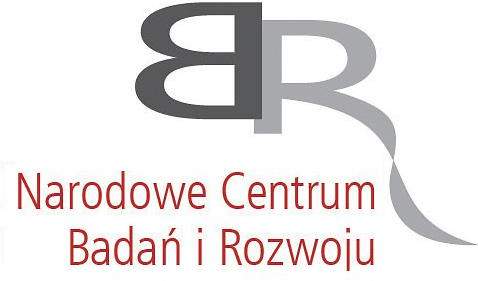| 1. |
Haponova O.♦, Tarelnyk V.♦, Zhylenko T.♦, Tarelnyk N.♦, Sarzhanov O.♦, Melnyk V.♦, Vlasovets V.♦, Pavlovskyy S.♦, Okhrimenko V.♦, Tkachenko A.♦, Improvement of Quality Parameters of Surface Layers of Steel Parts after Aluminizing by Electrospark Alloying. Pt. 1. Features of the Structural State of Steel Surfaces after Aluminizing,
Metallofizika i Noveishie Tekhnologii, ISSN: 1024-1809, DOI: 10.15407/mfint.45.12.1449, Vol.45, No.12, pp.1449-1472, 2023 Abstract:
The structure formation and properties of the surface layers of steel parts after alloying by traditional technologies and the method of electrospark alloying (ESA) is analysed in the article. As a result of the study of the productivity of the ESA process by aluminium electrode-tool, which is one of the important parameters of the ESA technology, reserves are revealed for improving the quality of the surface layers of steel parts during aluminizing. Two options for reducing productivity in relation to the traditional are studied: the first one, when productivity is reduced by ≅ 2 times; the second one, when performance is reduced by ≅ 4 times. As established, in the first variant, when the discharge energy increases from 0.52 to 6.8 J, at the first stage of aluminizing of steel 20 and steel 40, the thickness of the ‘white’ layer from 20 to 75 and from 25 to 110 μm, respectively; the thickness of the diffusion zone increases from 35 to 120 and from 40 to 140 μm, respectively; the microhardness of the ‘white layer’ increases from 2200 to 7400 and from 2400 to 7450 MPa, respectively; the surface roughness Ra increases from 1.1 to 9.0 and from 1.0 to 8.1 μm, respectively, and the continuity increases from 80 to 100% starting with Wp = 4.6 J and from 60 to 100% at Wp = 6.8 J. In the second variant, when the discharge energy increases from 0.52 to 6.8 J, at the first stage of processing steel 20 and steel 40, the thickness of the ‘white’ layer increases for steel 20 from 25 to 60 μm at Wp = 4.6 J, and then it doesn’t change for steel 40 from 30 to 100 μm; the thickness of the diffusion zone increases from 45 to 130, respectively; the microhardness of the ‘white layer’ increases from 2250 to 7300 and from 2450 to 7300 MPa, respectively; the surface roughness Ra increases from 1.3 to 9.0 and from 1.6 to 8.1 μm, respectively, and the continuity for both steel 20 and steel 40 at Wp = 0.52 J is of 95% and further increases to 100%. Keywords:
electrospark alloying, aluminizing, productivity, surface layer, structure, roughness, microhardness, thickness of the white layer, coating continuity Affiliations:
| Haponova O. | - | other affiliation | | Tarelnyk V. | - | other affiliation | | Zhylenko T. | - | other affiliation | | Tarelnyk N. | - | other affiliation | | Sarzhanov O. | - | other affiliation | | Melnyk V. | - | other affiliation | | Vlasovets V. | - | other affiliation | | Pavlovskyy S. | - | other affiliation | | Okhrimenko V. | - | other affiliation | | Tkachenko A. | - | other affiliation |
|  |
| 2. |
Tarelnyk V.♦, Haponova O.♦, Melnyk V.♦, Tarelnyk N.♦, Zubko V.♦, Vlasovets V.♦, Konopliachenko V.♦, Bondarev S.♦, Radionov O.♦, Mayfat M.♦, Okhrimenko V.♦, Tkachenko A.♦, The Surfaces Properties of Steel Parts with Wear-Resistant Coatings of the 1M and 90% BK6 + 10% 1M Composition Applied by the Method of Electrospark Alloying with the Use of Special Technological Environments. Pt. 1. The Strengthened-Surfaces’ Structural State Features,
Metallofizika i Noveishie Tekhnologii, ISSN: 1024-1809, DOI: 10.15407/mfint.45.05.0663, Vol.45, No.5, pp.663-686, 2023 Abstract:
The article describes a new method of forming the protective coatings of steel parts operating under conditions of abrasive wear both in general mechanical engineering, the composition of which is of 90% ВК6 + 10% 1М, and in industries, where there may be radiation exposure and the composition of 1М (70% Ni, 20% Cr, 5% Si, 5% B), by applying them by the method of electrospark alloying (ESA) with compact electrodes-tools made of nichrome wire X20Н80 and ВК6 hard alloy and using special technological media (STM), which include the necessary alloying elements. As a result of these research, it is established that the surface layers of the 45 and Р6M5 steels after applying wear-resistant coatings have a structure that consists of three areas: the ‘white layer’, the transition zone below, and the base metal. When the discharge energy (Wp) increases from 0.52 to 2.6 J, the thicknesses of the ‘white layer’ and the transition zone, their microhardness and surface roughness increase, but the integrity of the applied coating decreases. The highest microhardness of 9750-12800 and 14250-14600 MPa corresponds to the coating formed on steel 45 and Р6M5, respectively, during ESA by means of both the compact electrodes-tools made of hard alloy ВК6 and the STM with the composition of 0.5% Si + 0.5% B + 2% Cr + 7% Ni + 90% Vaseline. Keywords:
electrospark alloying, electrode tool, coating, white layer, microhardness, roughness, continuity Affiliations:
| Tarelnyk V. | - | other affiliation | | Haponova O. | - | other affiliation | | Melnyk V. | - | other affiliation | | Tarelnyk N. | - | other affiliation | | Zubko V. | - | other affiliation | | Vlasovets V. | - | other affiliation | | Konopliachenko V. | - | other affiliation | | Bondarev S. | - | other affiliation | | Radionov O. | - | other affiliation | | Mayfat M. | - | other affiliation | | Okhrimenko V. | - | other affiliation | | Tkachenko A. | - | other affiliation |
|  |





















